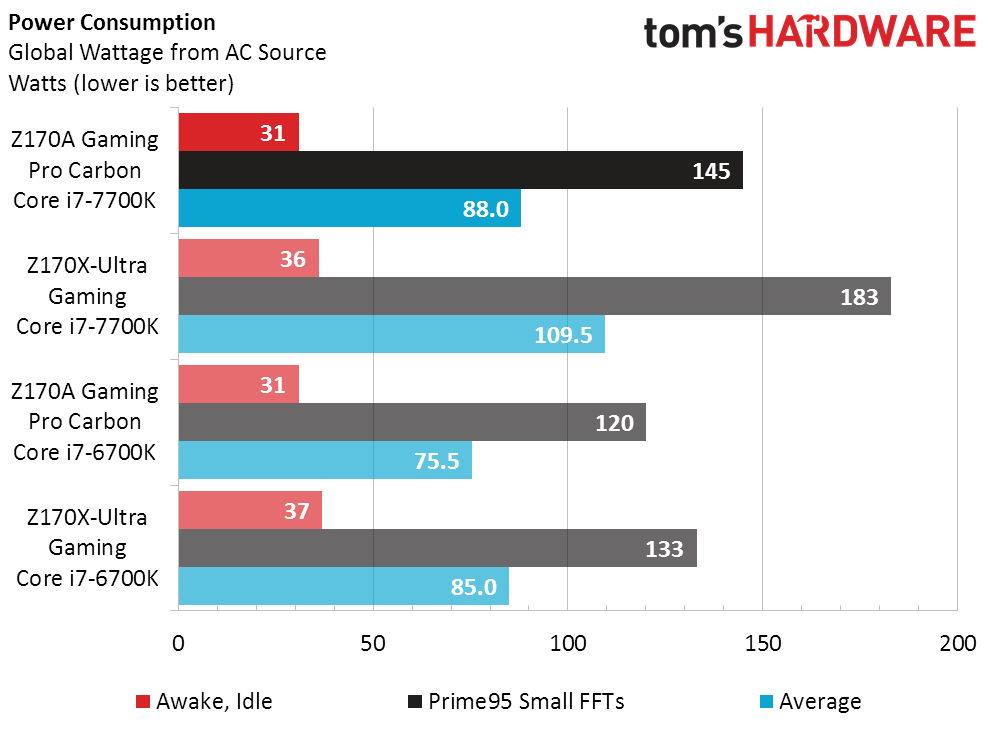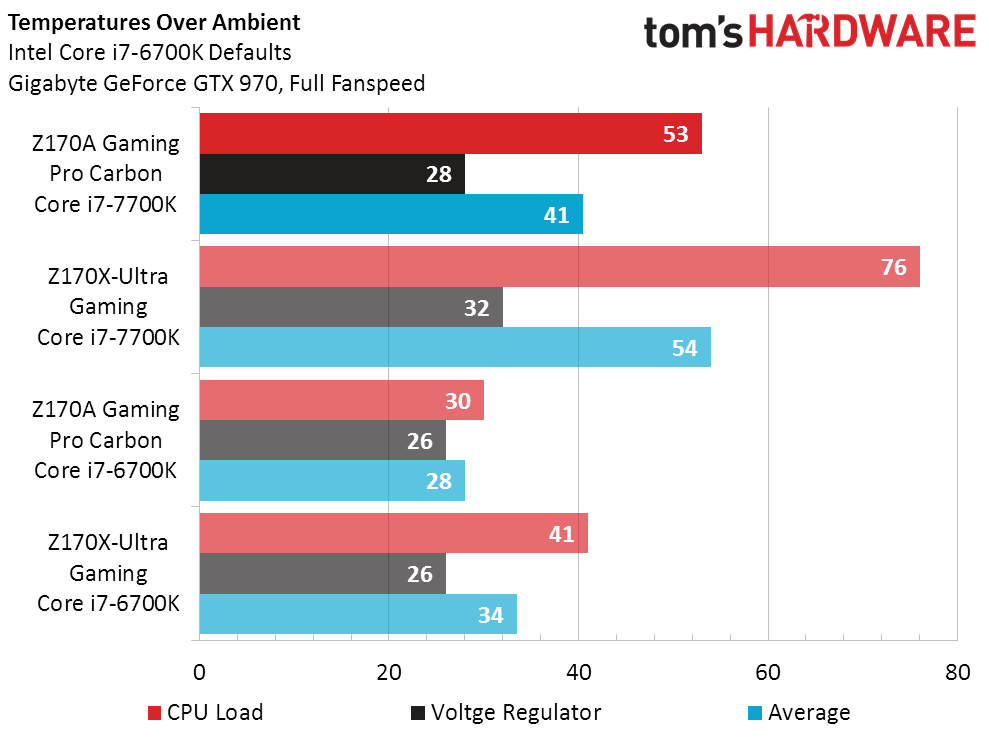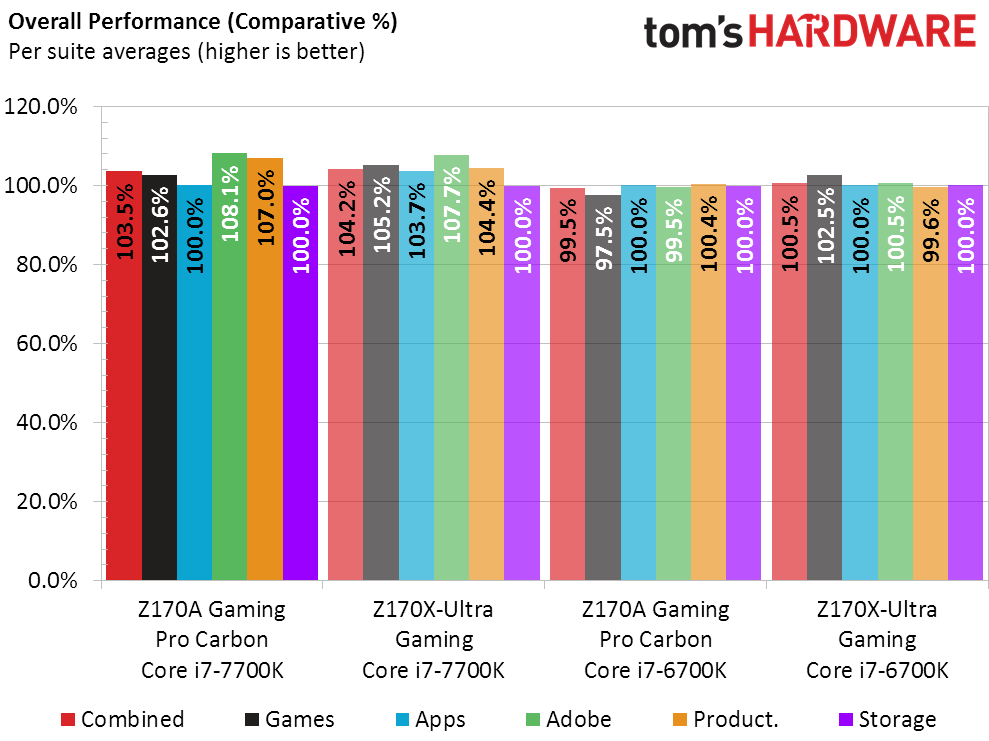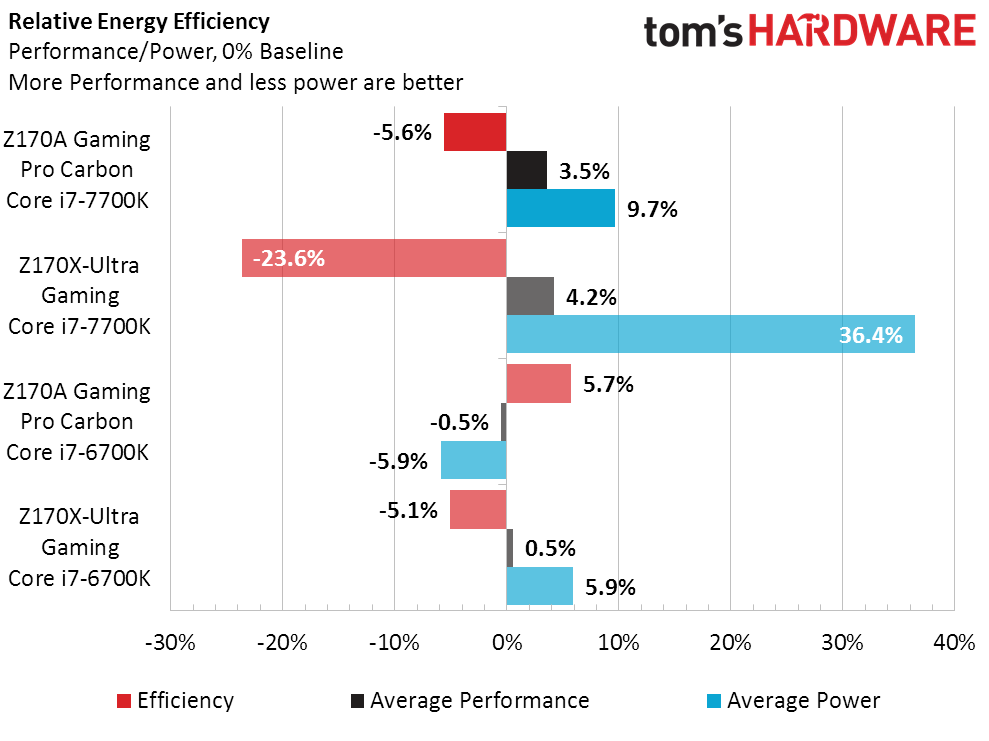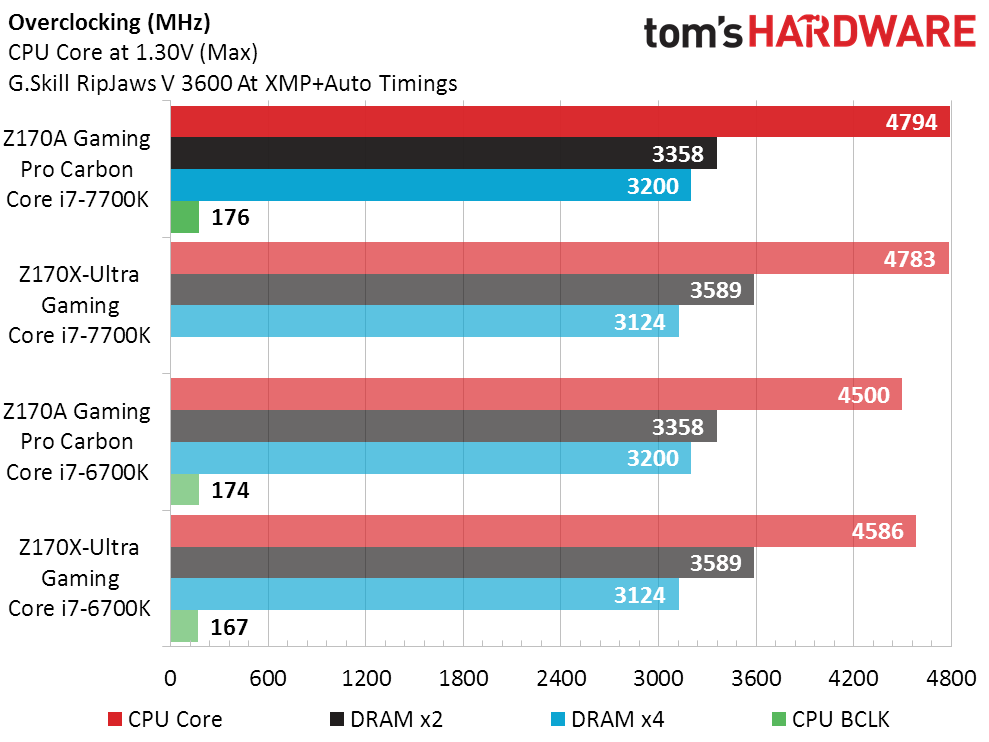Intel Core i7-7700K Retest: More Overclocking, Less Heat
Our saga to find the best Z170 motherboard for Kaby Lake continues, as we grow impatient for Z270 replacements.
The greatest takeaway from our initial Core i7-7700K overclocking test was that at high operating frequencies, Kaby Lake processors behave much like the Skylake models they replace. Adding voltage adds more stability for overclocking, with a corresponding heat penalty. After pushing our platform beyond 180W at full CPU load and stock clocks, and then noticing that peak power dropped by over 40W under abnormal firmware behavior, I postulated that a truly stable firmware would put actual energy consumption numbers between those highs and lows. A public firmware update for MSI’s Z170A Gaming Pro Carbon gave me the opportunity to test that hypothesis. Other than the new motherboard, the test configuration remains the same as our previous article.
Locked and loaded on the Z170A Gaming Pro Carbon, Core i7-7700K power numbers begin to fall in line with expectations set forth by Intel, when it added only a few watts TDP compared to the Core i7-6700K. It looks like the Z170X-Ultra Gaming firmware needs a little more work.
Temperatures are a different matter, but rather than blame a poor Core i7-7700K sample for the vast increase, I’m crediting this specific Core i7-6700K for producing lower-than-expected temperatures. Some samples are just a little bit better than others when it comes to moving heat from the CPU core to its integrated heat spreader.
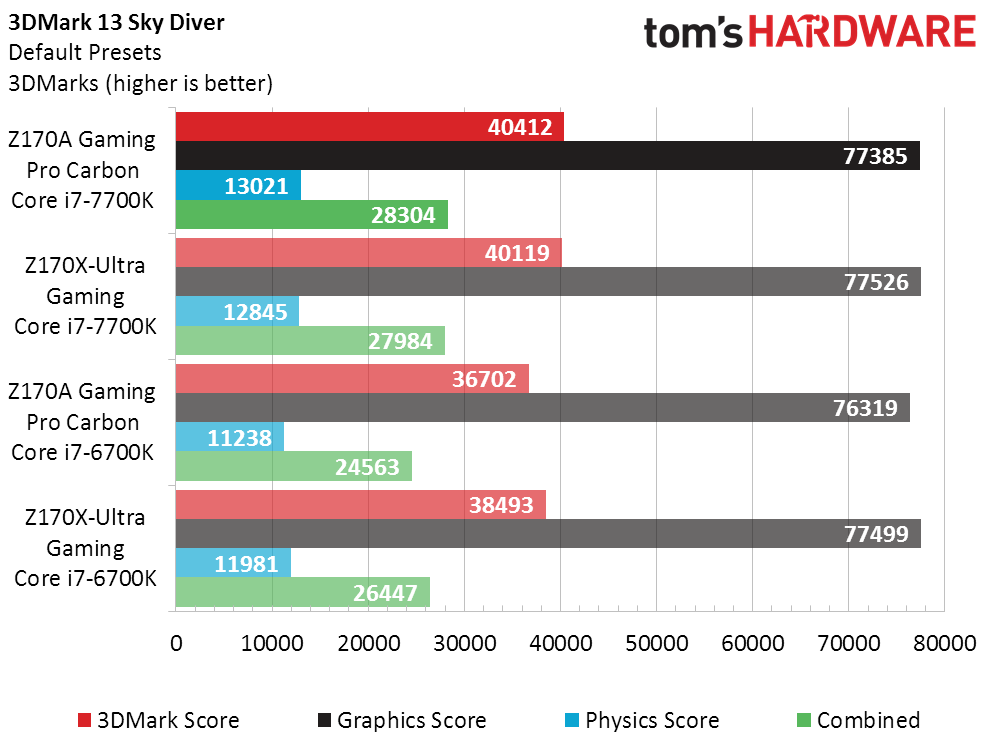
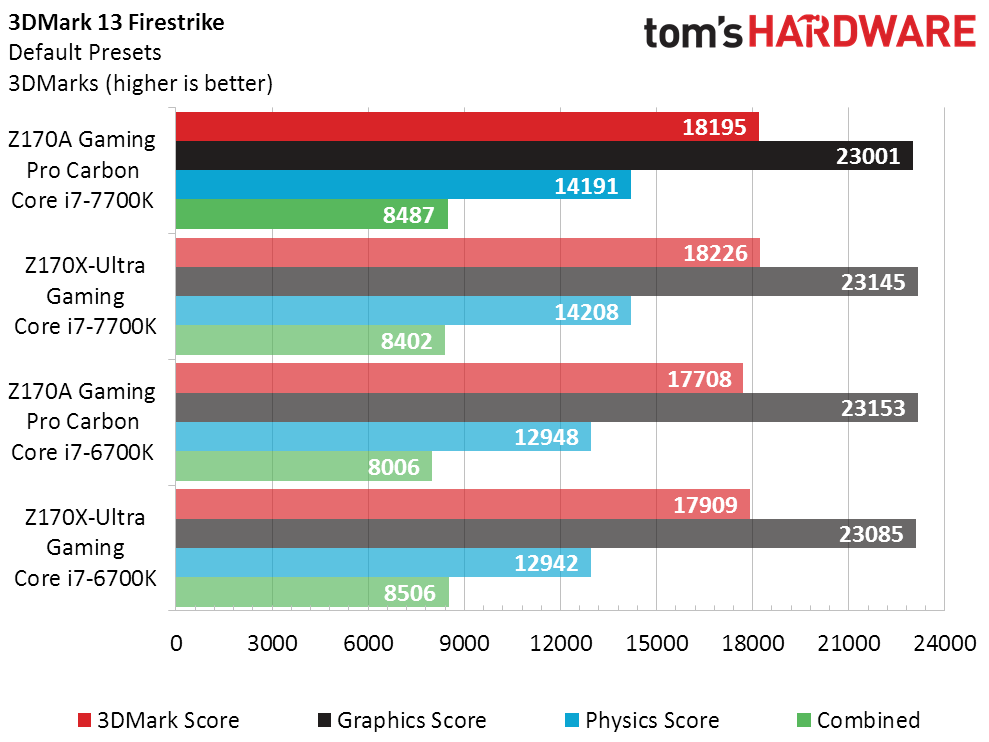
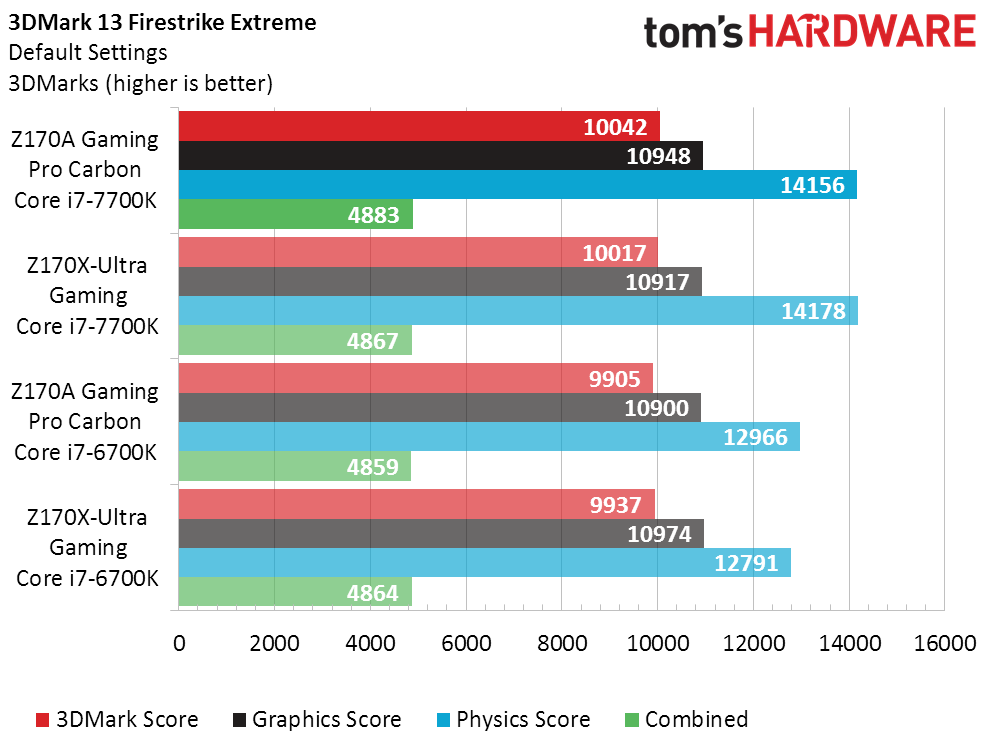
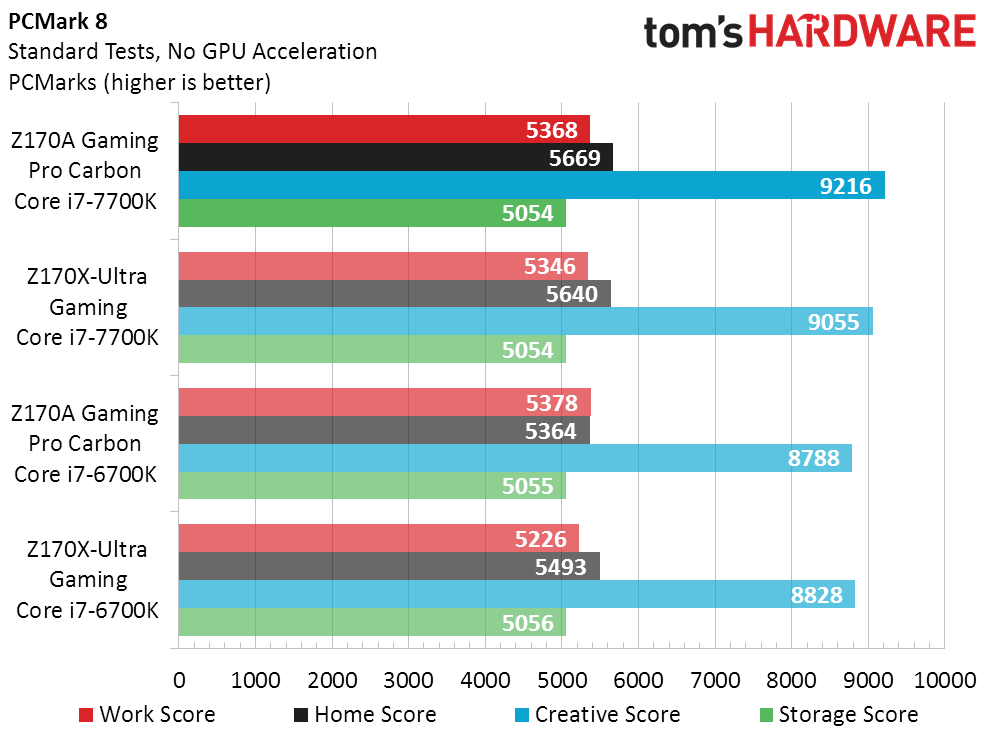
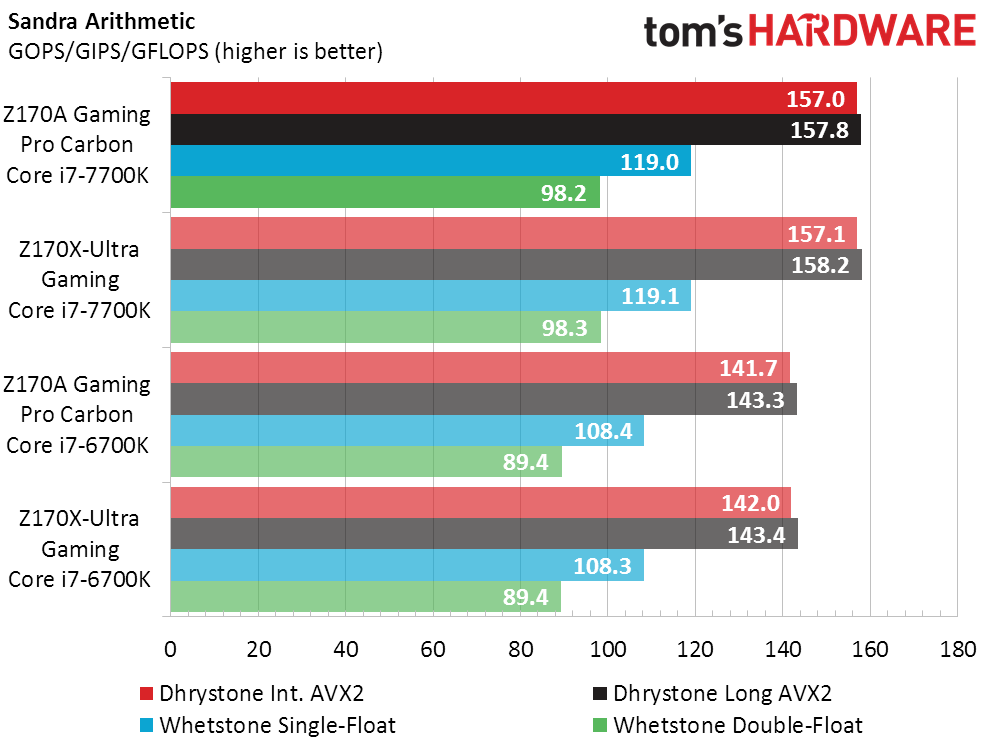
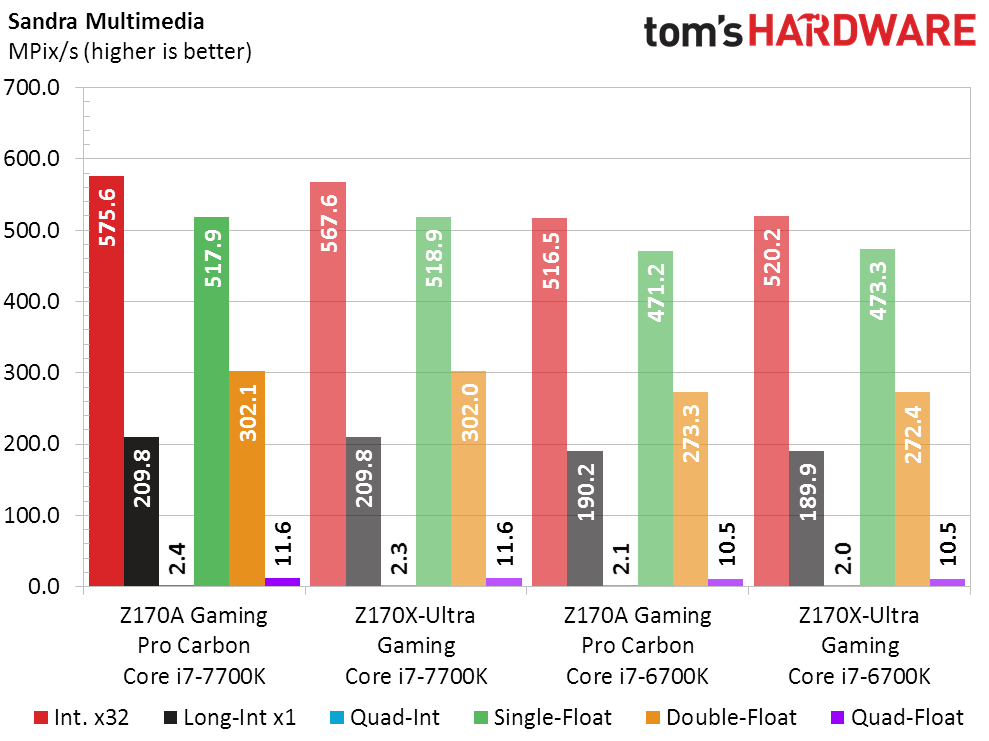
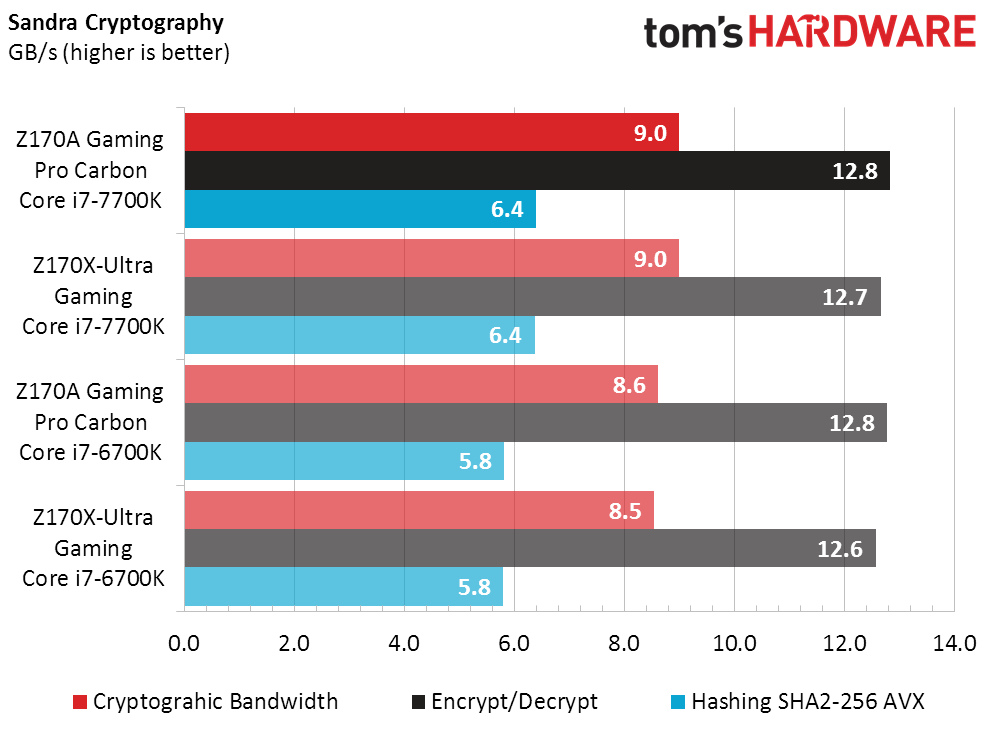
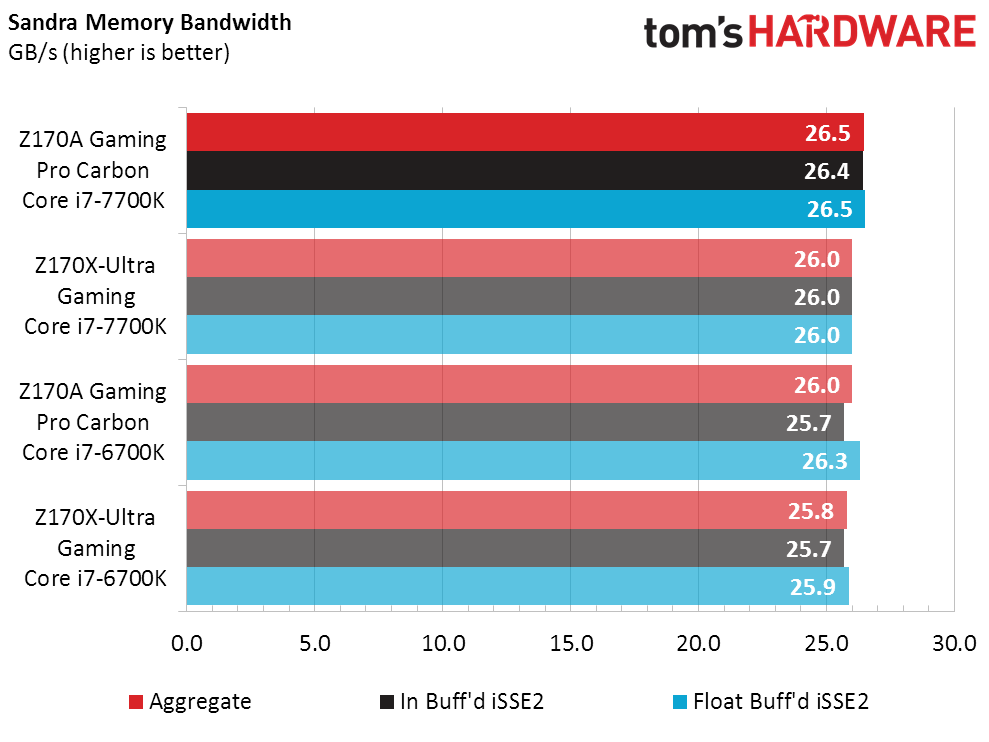
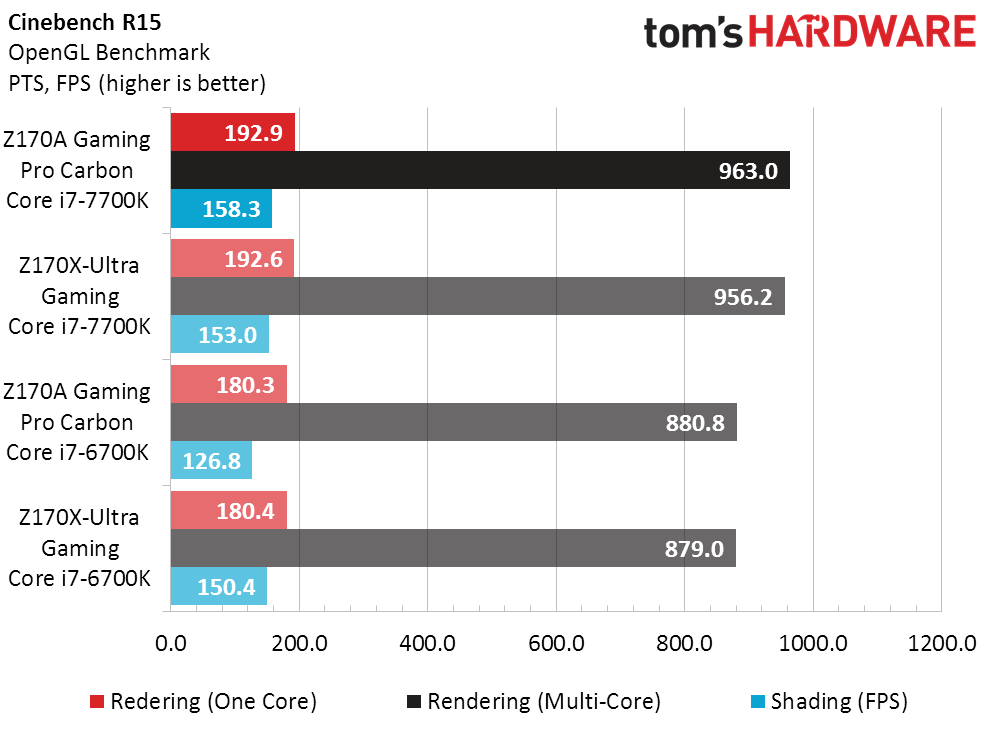
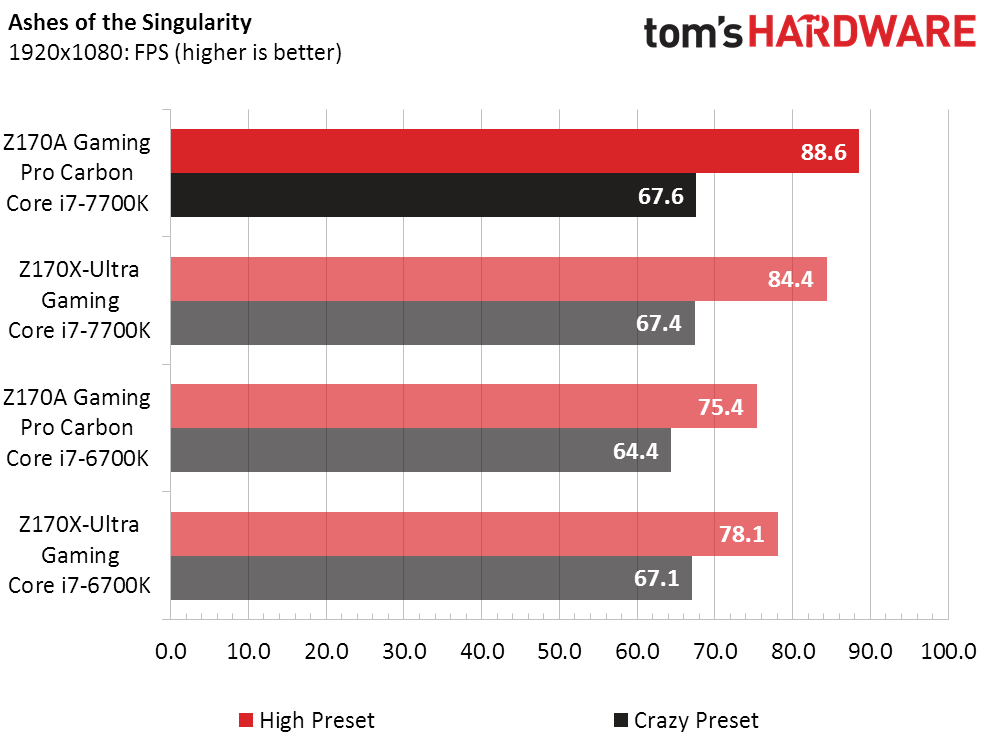
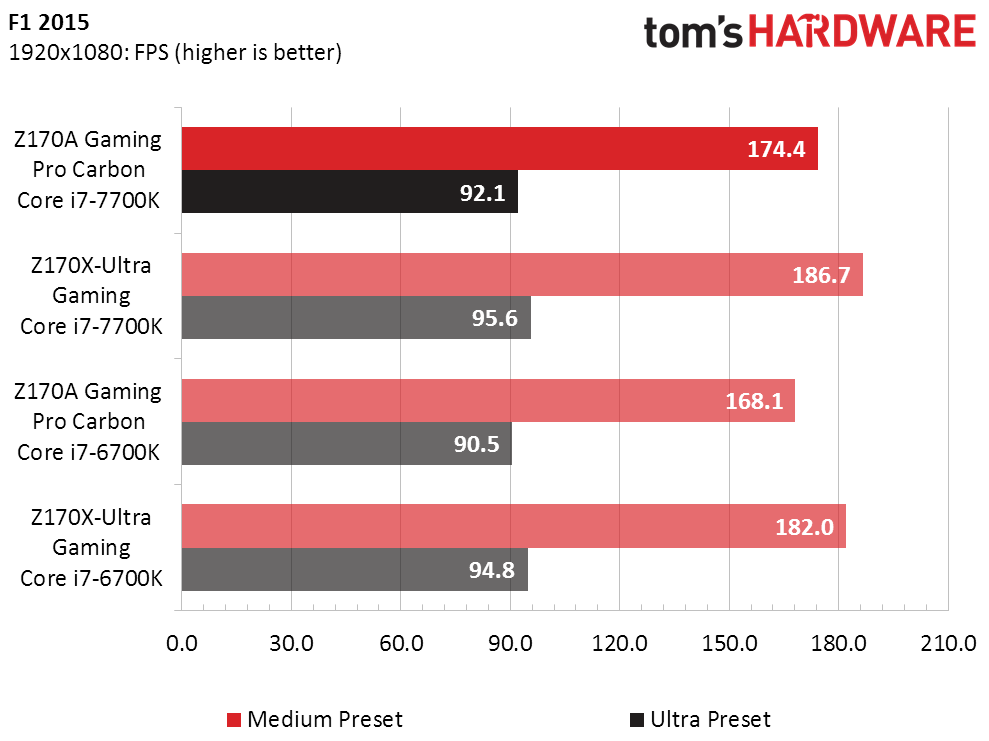
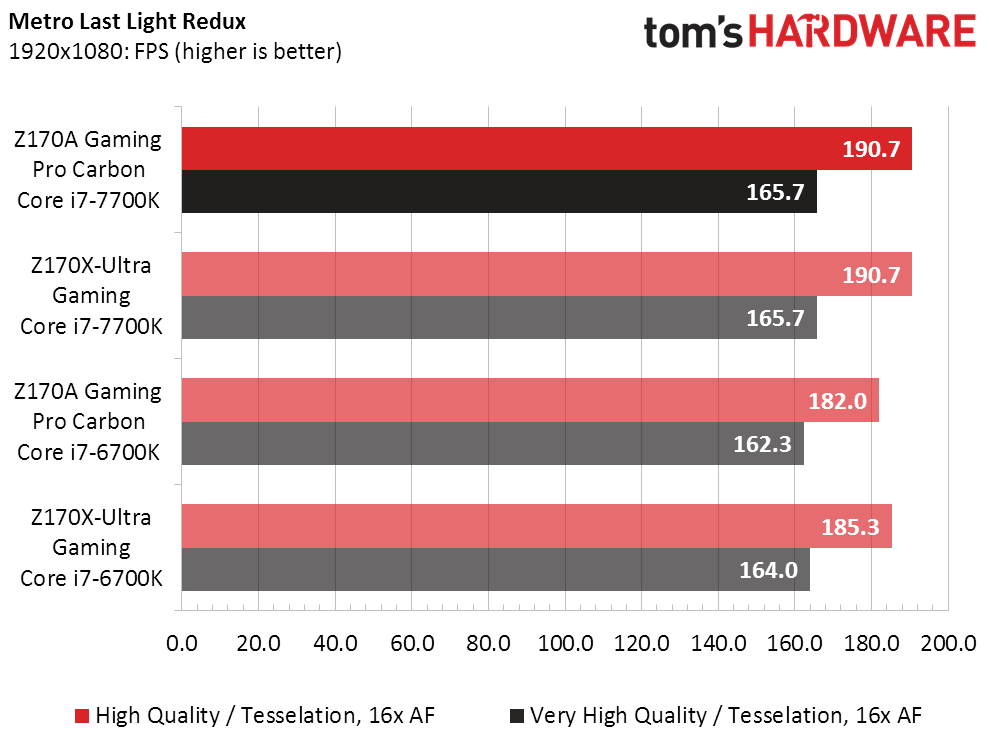
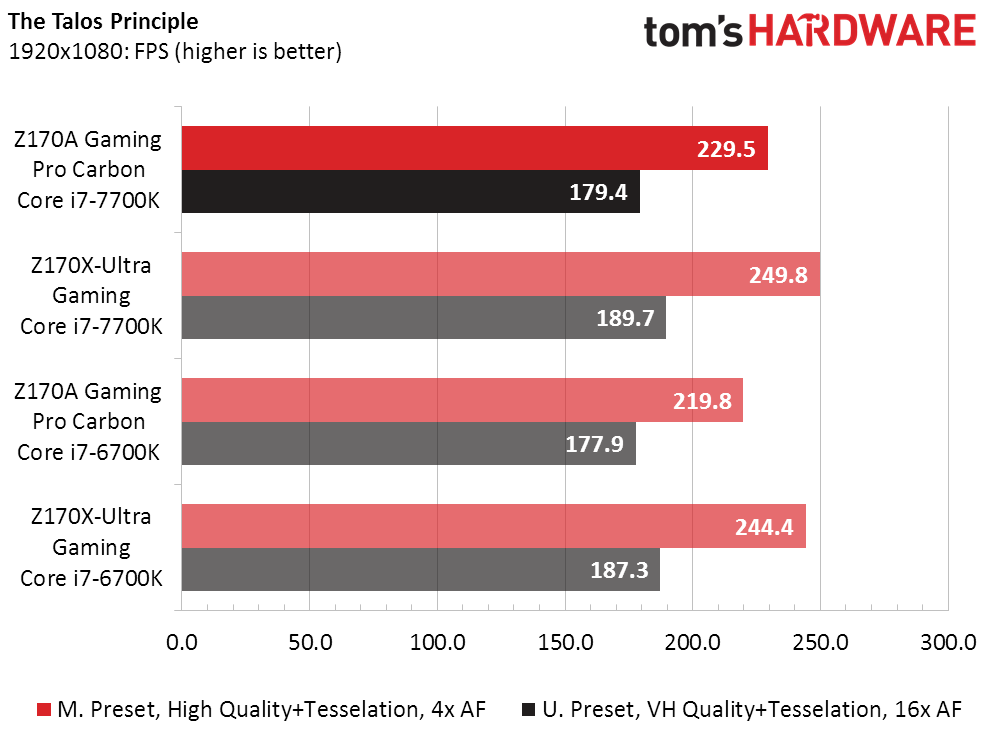
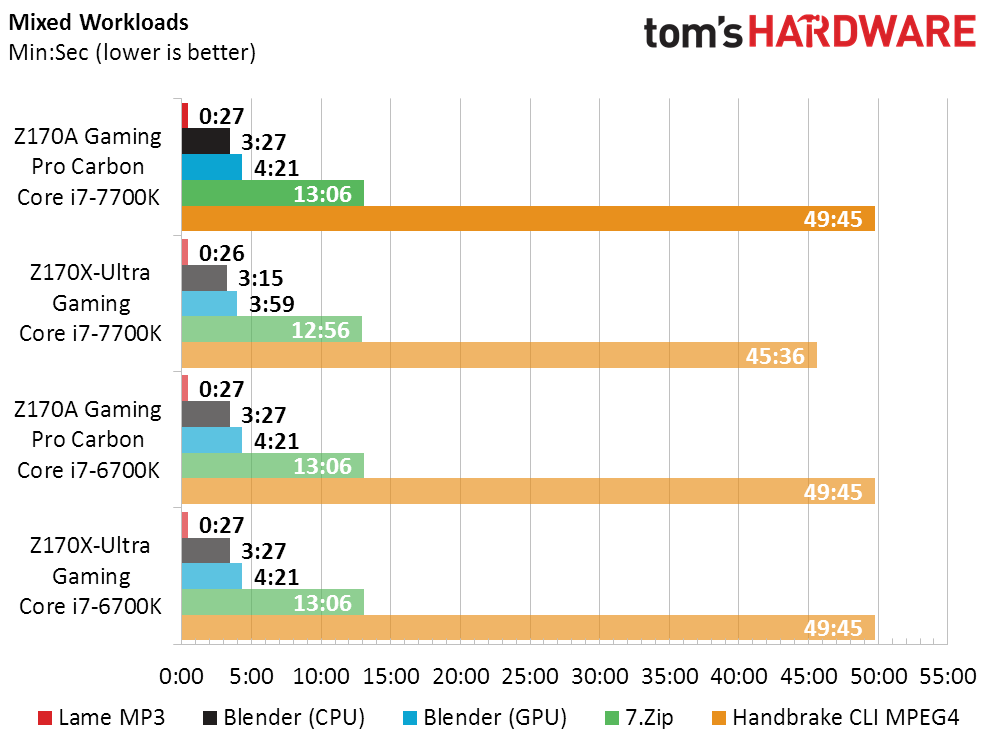
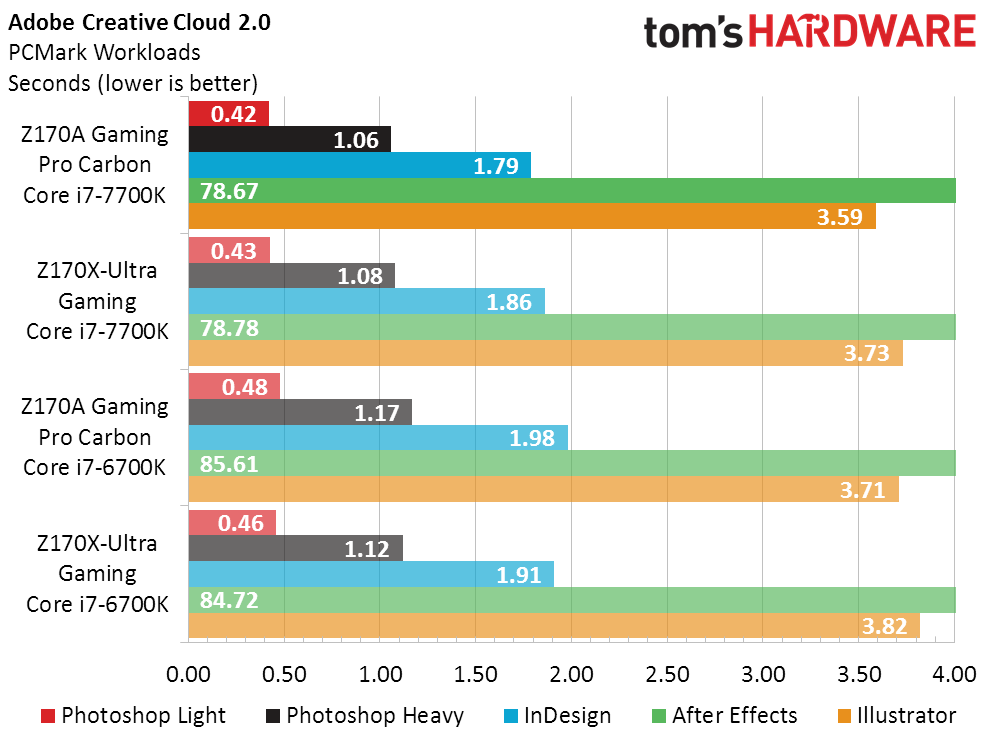
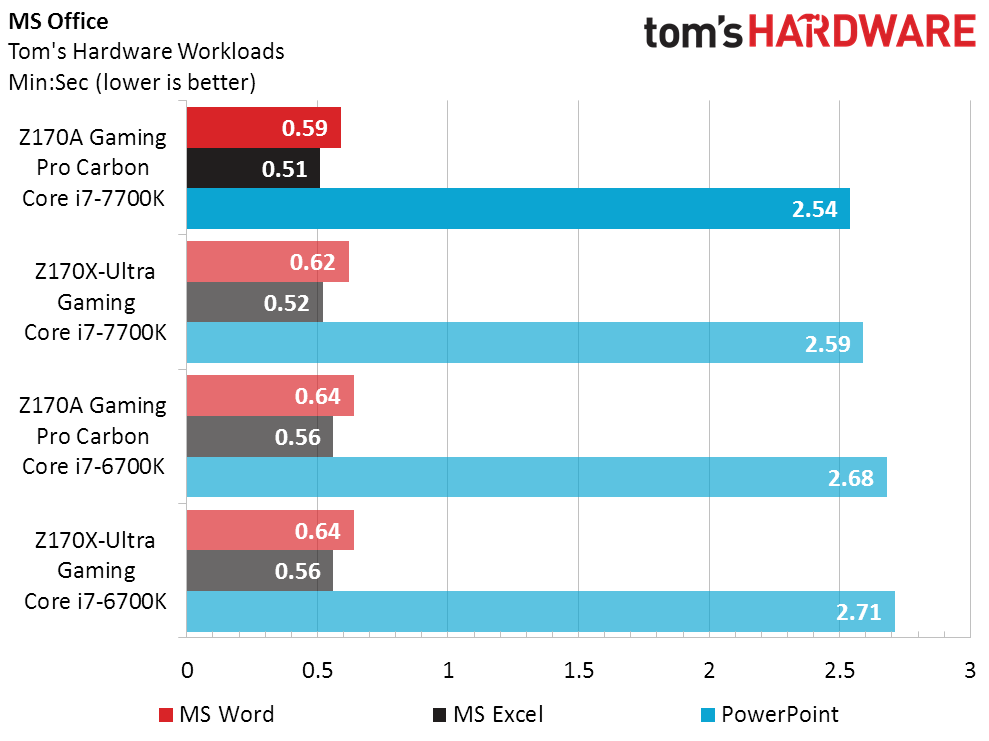
We already did a benchmark play-by-play in our previous analysis, and not much changes with the different motherboard. Highlights include slightly improved bandwidth for the Z170A Gaming Pro Carbon and lower FPS in The Talos Principle, which we were able to blame on troubles between that title and the motherboard’s included Nahimic Audio software. Disabling that software allows the Z170A Gaming Pro Carbon to perform on par with the previously tested Z170X-Ultra Gaming motherboard, as it gains 21 FPS and 9 FPS at the benchmark’s two respective detail levels.
Using that average of both Core i7-6700K configurations as a baseline, you can see that the Core i7-7700K performs about 8% better in applications that are primarily CPU limited. Adding benchmarks that aren’t limited by the CPU diminishes that advantage.
Even with a better-balanced motherboard, Intel’s big performance boost still looks incredibly like an overclock, and just as incredible is that this isn’t the first time we’ve seen Intel try that. At least the processor is stable this time, even though the better-balanced Z170A Gaming Pro Carbon still loses approximately 11% of its efficiency when going from a Core i7-6700K to a Core i7-7700K at firmware defaults.
It’s a little hard to fault Intel at all for wanting to push a little more out of its revised core, as we found an extra 200MHz of overclocking capability in the Core i7-7700K. And because the Z170A Gaming Pro Carbon’s firmware functioned a little more smoothly than the previously-used model, I was even able to boot it at 5.00GHz, only to find that it wasn’t stable enough to run Prime95 at any frequency above 4.80GHz. And yes, I did try more voltage.
Get Tom's Hardware's best news and in-depth reviews, straight to your inbox.
Other findings include that at 4.80GHz and 1.30V, the MSI-based platform still drew a mere 170W, and the CPU reached only 86°C. That extra thermal headroom is exactly what I needed to play around with more voltage, before finding that 4.80GHz is the best OC setting for this Core i7-7700K sample.
Chasing clock rate always incurs power and thermal penalties. Today’s news is that the penalties seen in our previous Core i7-7700K overclocking article are roughly cut in half simply by using a better-optimized motherboard. That makes this the perfect CPU to buy instead of its predecessor, for those of us who really want the extra performance and overclocking capability.
